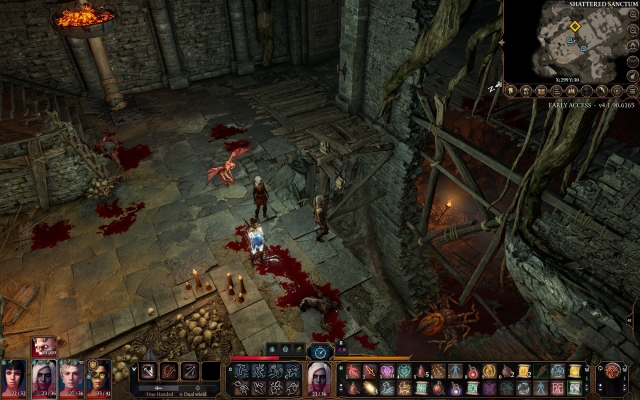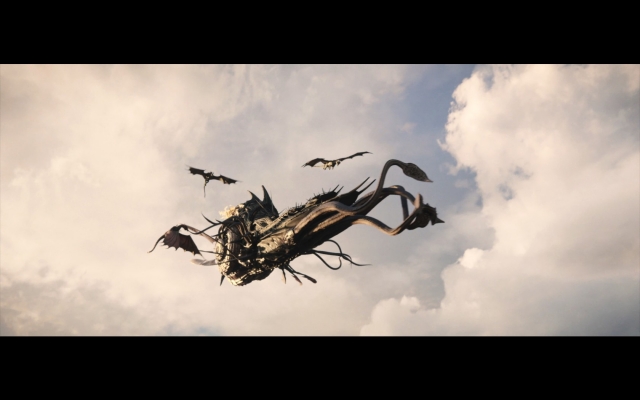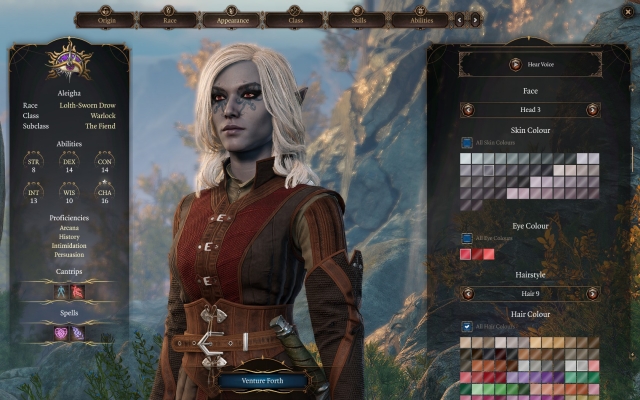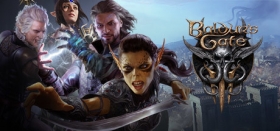
Baldur's Gate 3: Dungeons & Dragons For The Uninitiated
I have played through various campaigns and characters in Dungeons & Dragons 5th Edition for about two and a half years now. I got into the hobby just before it saw a huge surge in attention thanks to the popularity of shows like Critical Role, and thankfully, I had a group of friends in my hometown that were willing to show me the ropes. Since then I have gone on to play a plethora of different tabletop systems, from a Comic Book Superhero based TTRPG called Sentinels, to a game system set in the world of Dragon Age. During this time, I have joined a Tabletop RPG society at my University, which has shifted to an online presence due to COVID. Alongside this, our Discord server has seen an increasing number of newcomers who all want to try a tabletop game (usually D&D), but have never had the opportunity to do so before, and find the whole process rather confusing. With Baldur’s Gate 3 arriving in Early Access in late 2020, the game’s virtual take on the Dungeons & Dragons system means there have been many eyes on it, even from people who have never heard of the videogame franchise before.
After about 15 hours with the game so far, I have come to two solid conclusions. First, the game has an incredible amount of detail already and I’ve not scratched the surface of the current content. Second, that Baldur’s Gate 3 is the perfect tool for people wanting to get into Dungeons & Dragons, but find themselves put off by the complexity of character creation and understanding lore.

In this article, I’m going to be focusing on the latter conclusion. My thoughts on this stemmed from a recent conversation I had with a friend regarding Vampire: The Masquerade. The RPG videogame Bloodlines does a great job of showing the lore of the setting, but even though it attempts to function using the tabletop system, there are a lot of things that don’t translate well (or that they didn’t translate at all) to videogame format. In the tabletop game, a Vampire with a high-level Celerity Discipline (super-speed) can literally insta-kill you and your entire party in a single turn if you’re unlucky enough to piss one off. In the videogame, high Celerity just means you run around fast. In the TTRPG, you spend points in character creation on things like vampiric allies, human retainers, or a Haven (essentially a safe space for during the daytime), but in Bloodlines, you start with none of these and earn them based on quests and interactions with other characters. It’s a small thing but it meant that even though I’d played a variety of V:tM videogames, I still wasn’t fully prepared for TTRPG character creation and had to sit down with the Storyteller for a good hour or two before I fully understood it.
Baldur’s Gate 3 takes the mechanics of Dungeons & Dragons and translates it over to a videogame format almost perfectly. Obviously, this can be put down to Vampire: the Masquerade being a much more complex system than D&D 5e, but I feel it’s an important comparison to make because it emphasises how difficult something like this can be, and how Tabletop rules don’t always work in a videogame setting.

Larian Studios is famed for the development of the Divinity series, so it’s no amateur when it comes to the RPG genre. Baldur’s Gate 3 is set 100 years after the events of Baldur’s Gate 2, and cements itself into the D&D metaplot by taking place directly after the module book ‘Descent into Avernus’. In the BG3 canon, that story was successfully concluded by a band of heroes, and you play as someone in the aftermath of this. The intro sequence sets the scene pretty well if the scene you’re into is ‘shit going to hell’, given as that’s exactly where you get taken. Alongside this is an introduction to Mind Flayers, The Githyanki, and Dragon Riders. This alone contextualises players with not only what they’ll be facing in the game but gets them acquainted with what can be common antagonists in D&D campaigns.
Now we have the character creation. As of writing, the game currently only has 6 of the 12 playable classes from the Player’s Handbook (referred to as PHB from here on out) available, but has plans for all of them to be choices by full release. Judging by the current and expected content, Larian Studios is prioritising adding PHB content to the game before anything from the expansions (such as Volo’s Guide to Monsters and Tasha’s Guide to Everything). No one knows what the future holds and what will be in the game by the time of its full release, but as an Early Access game, this choice sits well as it means players won’t get overloaded with options. All the expansion books add a plethora of races, subclasses, backgrounds and the most recent one even added a whole new class in itself. All of this can make learning to make a new character incredibly daunting if you’re relying on online resources.

In the Early Access, you can play a Fighter, Rogue, Cleric, Wizard, Ranger, or Warlock, giving players a variety of options to choose from, whether they want a full martial class, a full caster class, or something in the middle. I went with a Warlock, as I’d never actually played one and was slightly confused by how their spell slots worked, as Warlocks in D&D function very differently to the other spellcasters. I also chose a Drow as my race, as I’ve wanted to play one in D&D, but wasn’t sure if the Sunlight Sensitivity would prove too difficult. Baldur’s Gate 3 did not give Drow players Sunlight Sensitivity, a change that does sort of get explained in-game if you read between the lines with a party member, but it also makes sense from a gameplay standpoint. Baldur’s Gate 3 doesn’t have a dynamic day/night cycle, so giving Drow players disadvantage on attacks in the sun would essentially be crippling them almost the entire game, which just wouldn’t be fun to play unless you specifically wanted to live in RNG hell. Instead, Larian Studios offset the Drow’s superior starting abilities by making almost all NPCs you meet in the game distrust you by default unless you convince them otherwise, as Drow are notoriously and inherently an evil race. It’s a well-balanced change and one that sits nicely in the game, putting a certain difficulty on playing the more powerful Drow race without making it unfun. The game holds your hand nicely during the tutorial and character creation, and even if it can look daunting to someone who’s never played D&D before, you never feel like you’re lost.
Another class I’ve avoided in D&D is the Wizard. The whole spellbook part of their kit just confused me and put me off playing one whenever I played a campaign. If this feels like you, then meet Gale, your very own Human Wizard companion that will join you on your adventures in Baldur’s Gate 3. His lack of Darkvision and smaller health pool makes bringing him into dungeons difficult (in fact, statistics from Larian showed that he died four times more frequently than any other character), but what I found him good for was learning the fundamentals of playing Wizard first-hand, including how preparing spells and spell scribing worked. Now, I have a Gnome Wizard character ready to play on my next tabletop campaign, thanks to the knowledge I gained from BG3.

Combat in Baldur’s Gate functions pretty much the same as D&D. Everyone rolls initiative, which dictates the turn order, and everyone can take an action and a bonus action on their turn. Some moves have been reclassified to make combat less static. Namely, disengaging is now a bonus action instead of a full action; a feature usually given to only the Rogue. To compensate for this, Rogues get two bonus actions, which allows them to attack twice and still disengage.
Baldur’s Gate 3 is shaping up to be the perfect videogame of a TTRPG, and the game’s Early Access is the best place for budding roleplayers to learn the ropes of Dungeons & Dragons. With the teased possibility of a Dungeon Master mode being added to the game on full release, it’s entirely possible that Baldur’s Gate 3 could sit as a possible replacement for sessions whilst we can’t play face-to-face. Whether you’re an experienced player wanting to learn a new class in a hands-on way without annoying all your friends if you don’t understand anything, or a new player wanting to get their first taste of TTRPGs, Baldur’s Gate 3 is the perfect game for you. The game sits at a high price (£49.99 as of writing), but it’s the first game of that price range where I’ve felt it is genuinely 100% worth it. The sheer amount you get out of this game is incredible, and I’m more than excited to see where Larian Studios takes the game in the future.












COMMENTS